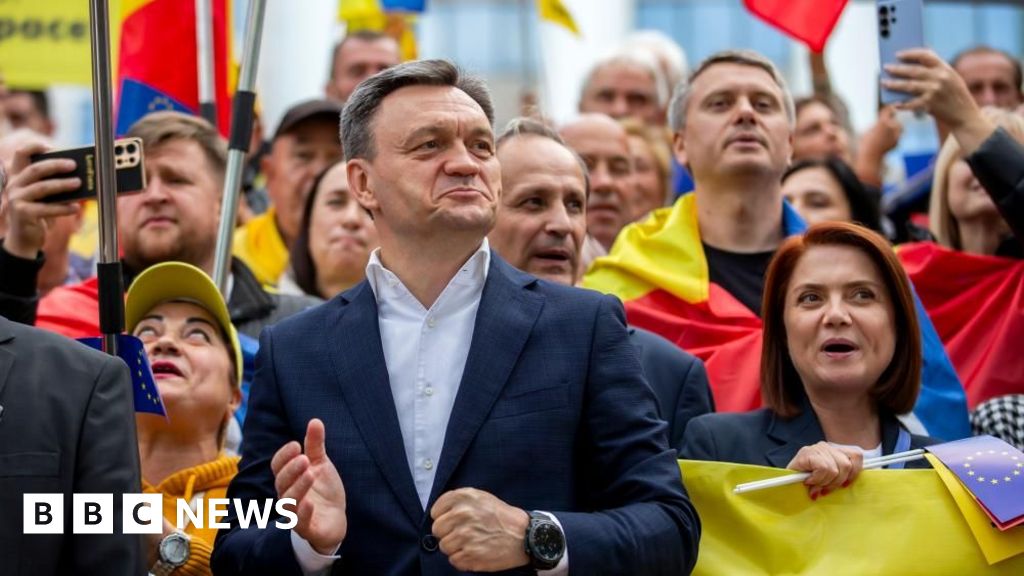Serbia's Economic Growth through EU Energy Integration
Explore Serbia's economic development, EU integration, energy policies, and regional cooperation trends.
Introduction
Serbia, strategically positioned in the Western Balkans, stands at a pivotal juncture in its economic development, driven by a robust focus on energy policy, regional cooperation, and European Union (EU) integration. As of 2025, the nation is actively pursuing accelerated energy market reforms and regional electricity market coupling, which are essential for realizing its economic and environmental ambitions. The country's commitment is underscored by its Integrated National Energy and Climate Plan, and the Energy Sector Development Strategy, which aim to align Serbia with EU's energy and climate policy frameworks.
EU integration holds significant importance for Serbia, offering pathways to enhanced economic stability, access to larger markets, and the adoption of superior energy standards. The technical completion of electricity market coupling with EU nations is anticipated within 18 months, a transformative milestone aimed at enhancing energy supply stability and price efficiency. These developments are integral to Serbia's transition towards a sustainable energy future and are expected to elevate its status in the regional energy market.
Background: Serbia's Economic and Energy Context
Serbia's economic trajectory has evolved through significant historical transformations, primarily shaped by the dissolution of former Yugoslavia and subsequent economic restructuring. The early 2000s marked a period of adjustment wherein the nation shifted from a socialist economy to a market-oriented system. Despite initial setbacks, including international sanctions and infrastructure challenges, Serbia has progressively embraced reforms designed to stabilize its macroeconomic environment.
One prominent challenge has been the country's energy policy. Historically reliant on coal and outdated infrastructure, Serbia faced significant obstacles in ensuring energy security and sustainability. The transition towards a diversified energy portfolio, crucial for economic growth and environmental commitments, necessitated strategic investments and policy revisions.
The initial steps towards EU integration have necessitated compliance with energy and environmental regulations, aiming to harmonize Serbia's policies with those of the European Union. This alignment involves not only legislative amendments but also infrastructural advancements, exemplified by the development of solar and wind energy facilities. Such efforts are crucial for Serbia's strategic objective of reducing fossil fuel dependency and fostering regional cooperation.
Recent developments in the regional energy sector highlight the urgency of these transformations. Serbia's ongoing integration into the EU’s energy network underscores the necessity for robust policy frameworks and intergovernmental cooperation. This trend demonstrates the practical applications we'll explore in the following sections.
This development illustrates regional geopolitical dynamics, influencing energy policy directions in Serbia and neighboring countries. The intersection of political and economic strategies remains critical as Serbia navigates its path toward full EU integration and energy policy reform.
Serbia's journey towards European Union integration, particularly in energy policy alignment, exemplifies a strategic blend of regulatory reforms, infrastructural enhancements, and regional cooperation. As highlighted in the table above, Serbia leads the Western Balkans in investing heavily in renewable energy, demonstrating a commitment to energy market reforms and closer alignment with EU energy standards. This focus is crucial, given Serbia's ambition to couple its electricity market with that of the EU, a move expected to be fully realized within the next 18 months.
The regulatory landscape in Serbia is evolving, aimed at fostering a competitive energy market structure that complies with EU directives. Key legislative acts such as the Integrated National Energy and Climate Plan and the Energy Sector Development Strategy signify a strategic roadmap towards sustainable energy development. These regulatory milestones pave the way for a systematic approach to achieving compliance with EU energy policies. One example of this alignment is the recent adoption of computational methods to optimize energy distribution, ensuring efficiency and reduced carbon emissions.
Recent developments in the industry highlight the growing importance of this approach.
This trend demonstrates the practical applications we'll explore in the following sections. Serbia's pursuit of EU energy market integration is further supported by technical implementations like RESTful API development to facilitate data synchronization between Serbian and EU energy databases, enhancing transparency and real-time decision-making ability.
Examples of Key Developments in the Energy Sector
In recent years, Serbia has made significant strides in aligning its energy policies with the EU's sustainability and climate goals. Key developments in the energy sector include substantial investments in renewable energy, infrastructure modernization, and successful implementation of large-scale projects. These efforts are in line with Serbia's broader economic development objectives and its strategic EU integration goals.
Investments in Renewable Energy
Serbia has prioritized the expansion of its renewable energy capacity as a key component of its energy policy. By 2025, Serbia aims to invest EUR 7 billion in renewable energy projects, with a focus on hydropower and solar capacities. This strategic investment is expected to enhance Serbia's energy independence and transition towards a more sustainable energy mix.
Infrastructure Modernization Projects
Modernizing infrastructure is essential for Serbia to enhance its energy efficiency and interconnectivity with neighboring countries. Investments of EUR 7-8 billion are earmarked to improve grid reliability and expand interconnection capacities with Hungary and Bulgaria. These projects not only aim to stabilize the energy supply but also facilitate Serbia's integration into the EU energy market.
Case Studies of Successful Projects
One of the notable successes is the Morava Hydropower Project, which exemplifies Serbia's commitment to leveraging renewable energy resources. This project not only increases the country's renewable energy output but also creates local employment opportunities, contributing to regional economic growth.
Recent developments in regional cooperation further emphasize the strategic importance of Serbia's energy policies. Croatia's readiness to acquire a U.S. sanctioned Serbian oil company indicates intensified regional energy collaborations.
This trend demonstrates the interconnected nature of regional energy policies and how they contribute to the overarching framework for EU integration. The continued cooperation between Balkan countries is a testament to the region's potential for collective economic growth and energy stability.
Best Practices in Energy Policy and Regional Cooperation
Effective energy policy and regional cooperation are pivotal for Serbia's economic development and EU integration. Strategies for successful policy implementation include leveraging computational methods to enhance regulatory frameworks and adopting systematic approaches for energy market adjustments. Serbia's proactive restructuring of its energy sector aligns with EU standards, exemplified by its Integrated National Energy and Climate Plan and Energy Sector Development Strategy. This alignment facilitates stable energy supply and competitive pricing, crucial for macroeconomic stability.
Collaborative efforts, particularly with neighboring countries like Hungary and Bulgaria, underscore the importance of regional cooperation. These partnerships have led to significant projects such as the interconnection of energy infrastructures, which optimizes resource sharing and enhances energy security across borders. Moreover, Serbia's commitment to energy market reforms and EU integration is characterized by its engagement in substantial investments in renewables, totaling EUR 7 billion, which further propels economic growth and sustainability.
The EU integration process offers valuable lessons, including the necessity of transparent regulatory frameworks and the promotion of market dynamics that encourage investment in renewables. These lessons are integral to Serbia's strategic alignment with EU energy policies.
import requests
def fetch_energy_data(api_url, token):
headers = {'Authorization': f'Bearer {token}'}
try:
response = requests.get(api_url, headers=headers)
response.raise_for_status()
return response.json()
except requests.exceptions.HTTPError as err:
raise SystemExit(err)
api_url = "https://api.energydata.com/v1/serbia"
token = "your_api_token_here"
energy_data = fetch_energy_data(api_url, token)
print(energy_data)
What This Code Does:
This code fetches real-time energy data from a RESTful API, facilitating data synchronization for informed policy decisions.
Business Impact:
Enables efficient data integration and reduces manual errors, improving energy policy decision-making.
Implementation Steps:
1. Replace api_url and token with actual API endpoint and token. 2. Run the script to fetch and process energy data.
Expected Result:
{ "country": "Serbia", "energy_data": [...] }
Metrics of Successful EU Integration in Energy Policy
Source: Research Findings
| Country | Energy Market Reforms | Investments in Renewables | Regional Cooperation |
|---|---|---|---|
| Serbia | Electricity market coupling with EU countries | EUR 7 billion in renewables | Interconnection with Hungary and Bulgaria |
| Croatia | Full integration with EU electricity market | EUR 5 billion in solar and wind | Part of Central and South Eastern Europe Energy Connectivity |
| Romania | Liberalized energy market | EUR 6 billion in green energy | Cross-border projects with Bulgaria and Hungary |
Key insights: Serbia is aligning its energy policies with EU standards through significant reforms and investments. • Regional cooperation is crucial for successful EU integration in energy policy. • Investments in renewables are a common strategy among countries integrating into the EU energy market.
Challenges and Troubleshooting in Policy Implementation
Serbia's economic development and EU integration efforts are interwoven with comprehensive energy policy reforms and regional cooperation initiatives. Despite the strategic momentum, there are considerable challenges in implementing these policies effectively.
Potential Obstacles in Energy Reforms
The Serbian energy market is undergoing substantial regulatory restructuring to align with EU standards. However, challenges such as regulatory fragmentation, legacy infrastructure limitations, and transitional inefficiencies pose significant hurdles. Computational methods and systematic approaches are vital in optimizing market operations and ensuring compliance.
Addressing Socio-Economic Impacts
Energy reforms must consider socio-economic impacts, particularly the potential for increased energy costs affecting lower-income households. Implementing targeted subsidies and leveraging data analysis frameworks can mitigate adverse impacts while promoting sustainable consumption patterns.
Mitigating Risks in Regional Cooperation
As Serbia pursues regional electricity market coupling, challenges in cross-border regulatory harmonization and energy security must be addressed. Efficient microservices communication patterns for real-time data exchange between regional partners can significantly reduce risks.
Conclusion: The Future of Serbia's Economic Integration
Serbia stands at a pivotal juncture in its economic development, particularly in the context of European Union (EU) integration and energy policy alignment. The country's strategic emphasis on energy market reforms and regional cooperation underscores its commitment to aligning with EU standards. The ongoing efforts to couple its electricity market with EU countries are projected to be completed within 18 months, enhancing Serbia's energy security and market competitiveness.
Investments in renewable energy and infrastructure modernization are significant, with EUR 7 billion dedicated to new hydropower and solar capacities. This not only facilitates Serbia's energy transition but also strengthens its position as a leader in the Western Balkans. The legislative advancements, such as the Integrated National Energy and Climate Plan, reflect a systematic approach to policy alignment, furthering Serbia's integration into the EU framework.






